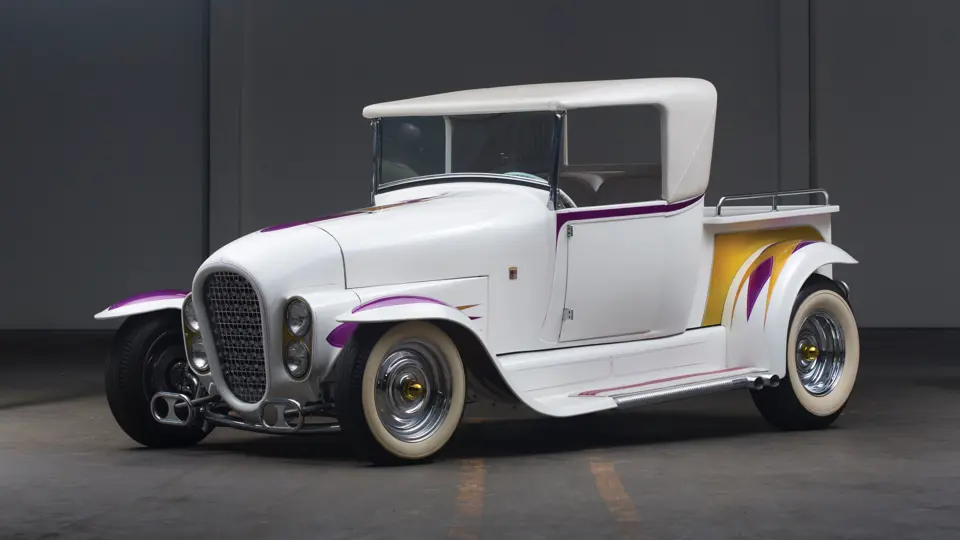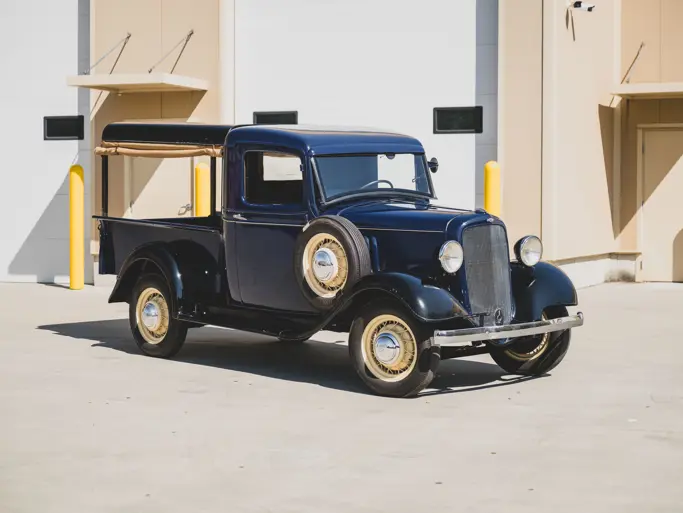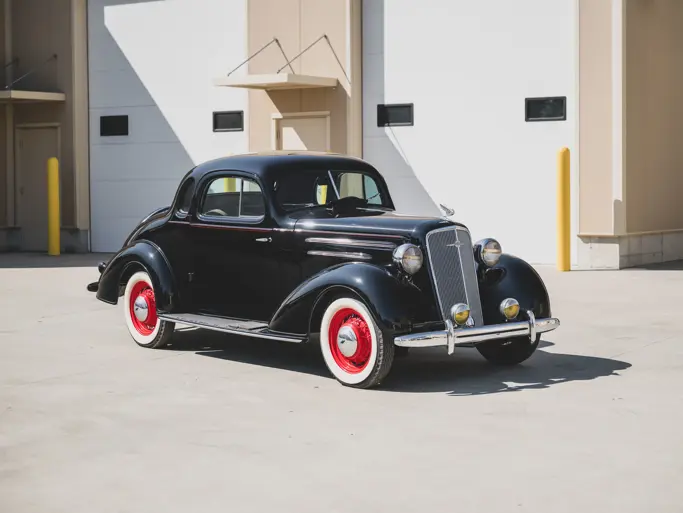
1929 Ford Ala Kart II
{{lr.item.text}}
$35,200 USD | Sold
{{bidding.lot.reserveStatusFormatted}}
- 350-cid OHV V-8 engine, automatic transmission
- A near faithful reproduction of the 1958 AMBR award winner by the Barris Kustoms
- Built in 1996 by Howdy Leadbetter with fiberglass body
- 1927 Ford frame, it has a Jaguar rear end, Magnum dropped-tube front suspension
Chassis no. 88745
350-cid OHV V-8 engine, automatic transmission, tubular front axle with semi-elliptic leaf spring, coil-over-shock independent rear suspension and four-wheel hydraulic disc brakes. Wheelbase: 103-inches
A ground-breaking custom in the 1950s, the original Ala Kart was built by Barris Kustoms for Richard Peters of Fresno, California, with express intention of winning the Most Beautiful Roadster trophy at the Oakland Roadster Show. Starting with the flathead-powered 1929 pickup that Peters had been driving in California farm country, Barris fitted a 1927 roadster body and hand-formed a bed. A three-piece hood was made of aluminum and a grille shell from hand-formed metal and tubing, housing quad headlights. A fuel-injected Dodge hemi was used, with Lincoln-Zephyr gears and late-model Ford hydraulic brakes. Suspension was coils all around, with Traction Masters in the rear.
Shown at Oakland in 1958, it came home with the coveted “Most Beautiful” trophy. It was later purchased by AMT and became the basis for the first scale model of a show rod. More than a million were sold. The original Ala Kart later wandered among several owners and became lost for a while, was damaged in a fire and later restored in the 1990s.
The car being offered, Ala Kart II, is a replica built by Howdy Ledbetter in 1996. On a 1927 Ford frame, it has a Jaguar rear end, Magnum dropped-tube front suspension and a modified Chevrolet 350 engine. The body is fiberglass. The interior is done in red, white and gold vinyl, with pleated seat and white carpet. The dashboard is of 1932 style, with Classic Instruments gauges. Although not entirely faithful to the original it very much looks the part, and generates the same excitement.


 | Burbank, California
| Burbank, California


